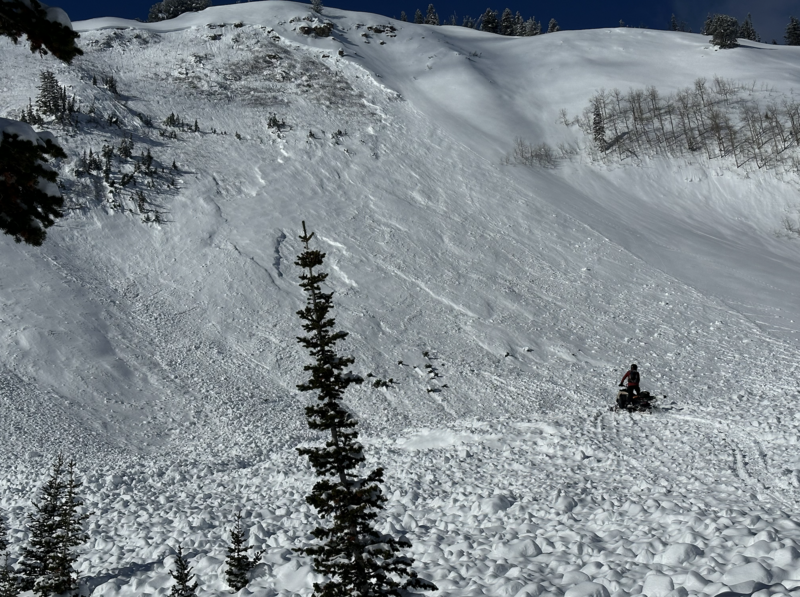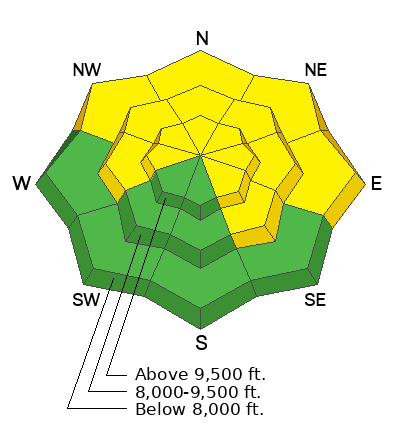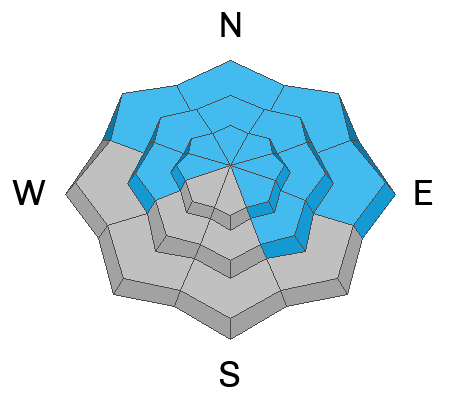Join us for a Motorized Backcountry 101: Introduction to Avalanches class on February 2-3 down on the Skyline. Click
HERE for more information.
This morning, under partly cloudy skies trailhead temperatures are in the high-teens° F to low 20's °F while the highest ridgelines are in the mid-teens °F. Winds are blowing from northwest in the mid-teens gusting to the 20's MPH at the 9,000' ridgelines and in the mid 20's gusting to the mid 30's MPH at the 11,000' ridgelines. There was no new snow overnight.
For today, we should see mostly sunny skies with temperatures from 31-36°F and winds blowing from the north-northwest 10 gusting to 15MPH at the 9,000' ridgelines and 30 gusting to 35 MPH at the 11,000' ridgelines. Winds are forecast to decrease throughout the day.
Looking forward we can expect to see progressively warmer temperatures with clear skies through the middle of the week with the next storm on the horizon for the end of the week. Read more from our partners at the National Weather Service
HERE.
Yesterday there was an avalanche reported from
Ant Knolls on the northern edge of the Provo Forecast region. This avalanche is representative of what you may find during Moderate danger with a buried persistent weak layer. This avalanche was 3' deep by 300' wide and ran 1000' vertical feet failing on facets under a hard slab on an east facing slope at 9,700'.
There were also a few reports of 3-4" deep avalanches in the new snow running on a melt-freeze crust on solar aspects. Some of these avalanches involved a bit of wind loading and there is still soft snow available for transport; you may find areas with
shallow wind drifts at higher elevations on south through east facing slopes.
On a trip through
Mary Ellen on the border of the Salt Lake and Provo area forecast regions we had some
wet-loose rollerball activity on southerly facing slopes below 8,000' and I would expect to see the same up to higher elevations today with the forecasted rise in temperature.

Photo of Ant Knolls Avalanche (Photo Credit R. Shea)
Click
here for all recent observations and avalanches.










